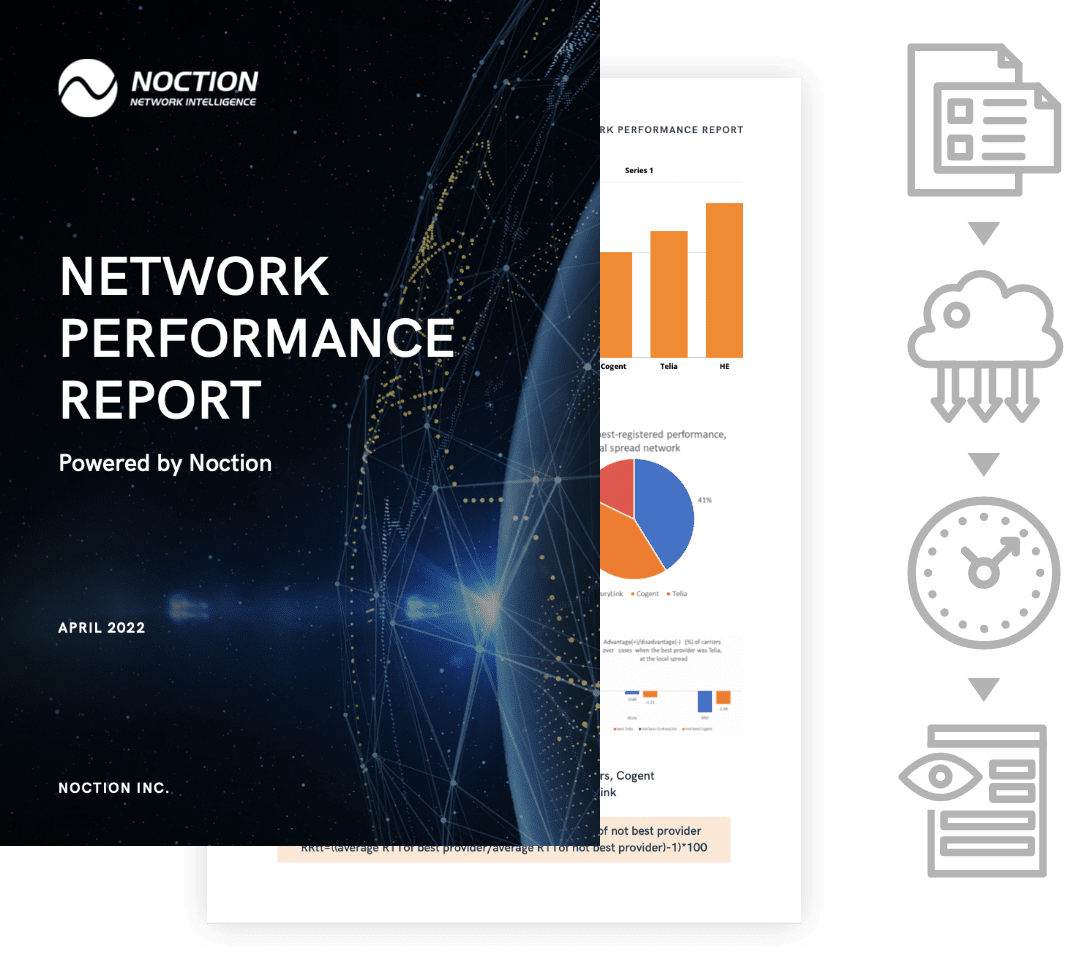Border Gateway Protocol (BGP) is not merely a protocol—it’s the backbone of the...

Get a Personalized Transit Providers Performance Report delivered to your inbox. A resource to help you identify the best-performing, reliable, and most suitable transit providers for Your network.
Sourcing an IP transit provider? Not sure which one to choose? We hear you.
When adding a new peering partner/transit provider to your mix, it’s too easy to get confused reviewing various options. There are many things to consider, such as the link speed, contractual obligations, and costs, but most importantly, providers’ performance.
The general Tier 1 performance data are helpful, but wouldn’t a report tailored to your own network and provider selection be more helpful? Just fill out the form, and we’ll email you a custom transit providers’ performance benchmarking report, so you can see how your potential carriers stack up against each other. The best part about all this, our custom reports are 100% free!

The report offers you a first-hand view of the requested internet carriers’ performance. It can be used as a trustworthy reference when negotiating contracts and developing a mature multi-homing strategy for Internet connectivity.
The reports are prepared based on the top-speaking ASN lists, and potential transit providers indicated/supplied by the requestor. Such information gets correlated to network performance data obtained from Noction IRP Lite instances, where the compulsory consent of the legal entities for the collection of such data is part of the Terms and Conditions document.
IRP Lite is a free version of Noction IRP – a routing optimization platform designed to improve performance and reduce the costs of running a multi-homed BGP network. IRP lite is typically deployed for educational purposes and is also used by budget-conscious organizations to optimize smaller networks with a limited number of providers.
The IRP Lite data collection method comprises of a Netflow collector looking at destinations an installed network is speaking to, and the explorer component then performing periodic probing via ICMP, UDP, and TCP_Syn, checking the performance metrics. The data is well sampled, as most IRP Lite enhanced networks speak to around a third of the routing table each day.
Your custom report is built on data collected by hundreds of IRP Lite instances throughout the world for the past three calendar months preceding the date of your request.
Have more questions about the report? We got answers. Please contact us for more information at info@noction.com.
It is best to choose a provider with a highly interconnected network that spans continents with multiple Points of Presence. The one that would enable you to gain a tremendous direct reach to various destinations. With the resilient international Internet backbones, your data typically traverses a minimum number of hops with lower latency, packet loss, and the chances of potential outages.
Select providers with extensive BGP knowledge and expertise. The ones with short BGP path routes for reduced AS hops and quick traffic delivery. The ones that embrace new routing optimization technologies and support a variety of BGP community strings other than just a black hole. The offered tools such as Looking glass and route servers for insights on traffic performance/statistics should be taken into account as well.
Consider providers that offer diverse connection speeds ranging from the Gigabit Ethernet, 10 Gigabit Ethernet, 40 Gigabit Ethernet to 100 Gigabit Ethernet ports. These would be able to support your bandwidth needs as you grow.
The adoption of IPv6 grows slowly. Networks expand using IPv6, while still serving IPv4 customers. As IPv4 and IPv6 must coexist, for now, ask the IP Transit provider if it is offering customers dual-stacking capabilities, with network interfaces originating and understanding both IPv4 and IPv6 packets.
All networks are not alike. Depending on your plans and growth forecast, choose a provider that would be able to accommodate your requirements. The one that can offer flexible billing options including burstable, 95th percentile, or a fixed recurrent pricing model.
Check for scalability and flexibility of the IP Transit provider, so you can rapidly add or cut back on transit connectivity based on your existing network needs. This would save you from stressing about fixed costs or the capacity of your provider in the future.
Email us at info@noction.com or click here to see how IRP takes network performance to the next level.